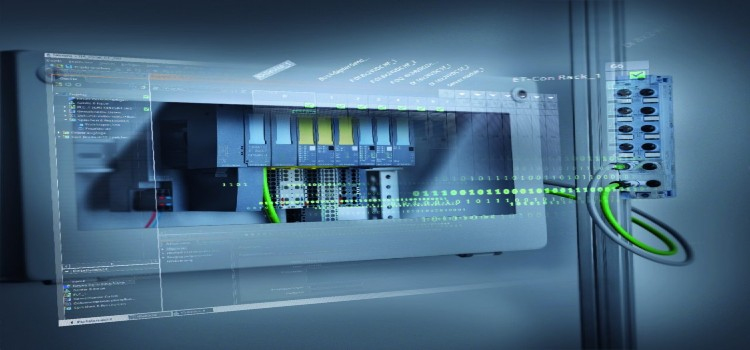
TinyML Market by Component (Hardware, Software, and Services), by Deployment (On-premise and On-cloud), and by End-User (Consumer Electronics, Healthcare, Manufacturing, Automotive, Aerospace & Defense, Agriculture, Energy & Utility, and Others) – Global Opportunity Analysis and Industry Forecast 2024-2030
TinyML Market Overview
The global TinyML Market size was valued at USD 1.47 billion in 2023 and is predicted to reach USD 10.80 billion by 2030 with a CAGR of 24.8% from 2024-2030. The tiny machine learning (TinyML) market involves creating and using machine learning technologies for small, low-power devices.
This market focuses on embedding advanced data processing and analysis capabilities into compact devices such as sensors, wearables, and embedded systems. Some of the features of tiny machine learning includes real-time data processing, energy efficiency, and reduced need for cloud computing.
By enabling intelligent functions such as voice recognition, image classification, and predictive analytics directly on these small devices, TinyML supports various applications, including consumer electronics and industrial automation, while saving power and lowering costs.
Market Dynamics and Trends
The tinyML market demand is significantly driven by the rising popularity of wearable devices that require real-time data analysis for features such as health tracking and activity monitoring.
TinyML provides the necessary on-device processing, enabling faster, more efficient performance. According to the National Library of Medicine, in 2022, more than 30% of U.S. adults use wearable healthcare devices with embedded sensors to monitor various physiological health metrics. Such rise in the adoption of the wearable devices highlights the growing need for tiny machine learning that provides essential on-device processing to handle the increasing data from these devices efficiently.
Moreover, the growing use of cloud computing across various industries is fueling the demand for efficient, low-latency AI models that can process data at the edge. TinyML allows for the deployment of machine learning algorithms directly on devices, reducing the dependency on cloud resources, optimizing performance, and lowering operational costs.
As per the report published by Cloud Security Alliance (CSA), global cloud adoption is growing at a significant rate with an estimation of public spending on cloud services expected to grow by 20% from 2022. The surge in cloud adoption drives the demand for efficient and real-time data processing, thereby fuelling the TinyML market growth.
Furthermore, the rising investment in industrial automation, driven by the need for enhanced operational efficiency and cost reduction, is fuelling the demand for edge AI to automate and optimize various processes. TinyML facilitates real-time data analysis and decision-making directly on machinery and equipment, enabling improved monitoring, predictive maintenance, and process control.
According to a report by McKinsey published in 2022, companies are making substantial investments in robotics and automation, with automation costs in many industrial sectors expected to account for 25% of capital spending over the next five years. The surge in investment in industrial automation, boosting the growth of the market.
However, the security concerns hinder the tinyML market expansion as the deployment of these solutions on small, distributed devices increases their vulnerability to cyberattacks and unauthorized access.
On the contrary, the introduction of edge AI applications that require targeted machine learning is anticipated to create future opportunity for the market. By deploying targeted machine learning models at the edge, these applications can perform specific tasks, such as real-time analysis and decision-making, more efficiently.
Market Segmentations and Scope of the Study
The tinyML market report is segmented on the basis of component, deployment, end-user, and region. On the basis of component, hardware, software, and services. On the basis of deployment, the market is classified into on-premise and on-cloud. On the basis of end-user, the market is divided into consumer electronics, healthcare, manufacturing, automotive, aerospace & defense, agriculture, energy & utility, and others. Regional breakdown and analysis of each of the aforesaid segments include regions comprising of North America, Europe, Asia-Pacific, and RoW.
Geographical Analysis
North America dominates the tinyML market share and is expected to continue its dominance during the forecast period. This is attributed to the increasing investment in healthcare for the adoption of advanced healthcare devices for various applications, including remote patient monitoring, medical imaging, and personalized treatment plans.
According to a report from the Centers for Medicare & Medicaid Services (CMS), the national health expenditure rose to around USD 4.84 trillion in 2023 from USD 4.50 trillion in 2022. This rise in healthcare spending underscores the growing demand for advanced healthcare technologies, thereby propelling the tinyML market growth in the region.
Moreover, the rising investment in artificial intelligent (AI) is further boosting the growth of the market in this region. As AI technologies evolve and become more sophisticated, they enhance the capabilities of tinyML, making it more effective for real-time data processing and analysis on small, low-power devices.
As per the Government of the U.S., the budget for fiscal year 2024 includes significant funding for AI. It allocates USD 3 billion across various agencies to develop, test, and implement AI applications. Additionally, USD 30 million is allocated for the National AI Research Resource program to broaden access to computing and data resources for AI research and innovation.
On the other hand, Asia-Pacific is expected to show a steady growth in the tinyML market trends due to the rising demand for consumer electronics. As more electronic devices, such as smartphones, smartwatches, and home automation products, become prevalent, there is a growing demand for tiny machine learning solutions to provide efficient, real-time data processing.
This growing demand for consumer electronics in the Asia-Pacific region is expected to drive the expansion of the market, as the need for efficient, real-time data processing in these devices continues to rise.
Moreover, the growing demand for advanced technologies in automotive vehicles is driving the growth of the tinyml market. As automotive manufacturers seek to incorporate features such as object detection, lane-keeping assistance, and driver monitoring. TinyML improves response times and reduces the need for constant communication with central systems, enhancing the efficiency and effectiveness of automotive safety and autonomous driving features.
According to the report published by the International Organization of Motor Vehicle Manufacturers (OICA) the production of vehicles in countries such as China reached 30.17 million, in India 5.85 million and in Japan 9 million in 2023 from 27 million in China, 5.45 million in India and 7.83 million in Japan in 2022. The surge in vehicle production among various countries drives the demand for advanced and autonomous driving feature, fuelling the growth of the market.
Competitive Landscape
Various players operating in the tinyML industry are Microsoft Corporation, ARM, STMicroelectronics, Cartesian, Meta Platforms, EdgeImpulse Inc., InData Labs, Amazon Web Services, Databricks, ScienceSoft, MobiDev, Renesas Electronics, Klika Tech, TinyML Foundation, NXP Semiconductors, and others. These companies are adopting various business strategies such as acquisition and partnership to remain dominant in the market.
For instance, in June 2024, TinyML Foundation developed new datasets specifically designed for resource-constrained artificial intelligence (AI) and machine learning (ML) applications. These datasets aim to enhance the development and performance of AI models that operate on devices with limited computational resources, such as microcontrollers and IoT devices.
Also, in June 2022, Renesas Electronics announced its plans to acquire Reality AI. The acquisition aims to enable Renesas to enhance its AI and machine learning capabilities for its microcontrollers and system-on-chips used in various applications, such as automotive, industrial, and smart home devices.
Moreover, in January 2022, Klika Tech announced its partnership with the TinyML Foundation. This partnership aims to increase the development of edge computing with machine learning, allowing Klika Tech to access on-device data analytics through machine learning.
Key Benefits
-
The tinyML market report provides the quantitative analysis of the current market estimations from 2024 to 2030. This analysis assists in identifying the prevailing industry opportunities to capitalize on.
-
The study comprises of a detailed analysis of the current and future tinyML market trends for depicting the prevalent investment pockets in the sector.
-
The information related to key drivers, restraints, and opportunities and their impact on the market is provided in the report.
-
The competitive analysis of the market players along with their market share in the market is mentioned.
-
The SWOT analysis and Porter’s Five Forces model are elaborated in the study.
-
The value chain analysis in the market study provides a clear picture of the stakeholders’ roles.
TinyML Market Key Segments
By Component
-
Hardware
-
Software
-
Services
By Deployment
-
On-premise
-
On-cloud
By End-User
-
Consumer Electronics
-
Healthcare
-
Manufacturing
-
Automotive
-
Aerospace & Defense
-
Agriculture
-
Energy & Utility
-
Others
By Region
-
North America
-
The U.S.
-
Canada
-
Mexico
-
-
Europe
-
The U.K.
-
Germany
-
France
-
Italy
-
Spain
-
Denmark
-
Netherlands
-
Finland
-
Sweden
-
Norway
-
Russia
-
Rest of Europe
-
-
Asia-Pacific
-
China
-
Japan
-
India
-
South Korea
-
Australia
-
Indonesia
-
Singapore
-
Taiwan
-
Thailand
-
Rest of Asia-Pacific
-
-
RoW
-
Latin America
-
Middle East
-
Africa
-
REPORT SCOPE AND SEGMENTATION
|
Parameters |
Details |
|
Market Size in 2023 |
USD 1.47 billion |
|
Revenue Forecast in 2030 |
USD 10.80 billion |
|
Growth Rate |
CAGR of 24.8% from 2024 to 2030 |
|
Analysis Period |
2023–2030 |
|
Base Year Considered |
2023 |
|
Forecast Period |
2024–2030 |
|
Market Size Estimation |
Billion (USD) |
|
Growth Factors |
|
|
Countries Covered |
28 |
|
Companies Profiled |
15 |
|
Market Share |
Available for 15 companies |
|
Customization Scope |
Free customization (equivalent to up to 80 working hours of analysts) after purchase. Addition or alteration to country, regional, and segment scope. |
|
Pricing and Purchase Options |
Avail customized purchase options to meet your exact research needs. |
Key Players
-
Microsoft Corporation
-
ARM
-
STMicroelectronics
-
Cartesian
-
Meta Platforms
-
EdgeImpulse Inc
-
InData Labs
-
Amazon Web Services
-
Databricks
-
ScienceSoft
-
MobiDev
-
Renesas Electronics
-
Klika Tech
-
TinyML Foundation
-
NXP Semiconductors




 Speak to Our Analyst
Speak to Our Analyst


































